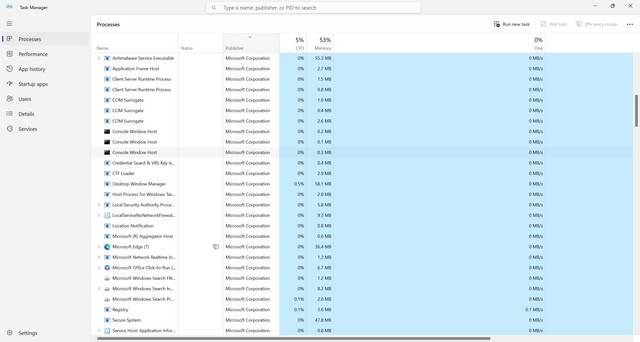Task Manager is a powerful tool in Windows that allows users to monitor and manage running processes on their computer. It provides valuable insights into the performance and resource usage of various applications and services. One process that users often come across in Task Manager is the Cortana process. In this article, we will explore why the Cortana process is running in Task Manager and its significance in the Windows operating system.
What is Cortana?
Cortana is a virtual assistant developed by Microsoft for Windows 10. It is designed to help users perform various tasks, such as searching the web, setting reminders, managing calendars, and providing personalized recommendations. Cortana uses natural language processing and machine learning algorithms to understand user commands and provide relevant responses.
Cortana Process in Task Manager
When you open Task Manager in Windows 10, you may notice a process named “Cortana” running in the background. This process is responsible for handling all the functionalities and tasks related to Cortana. It ensures that Cortana is always available and ready to assist users whenever needed.
The Cortana process, also known as “SearchUI.exe,” is an essential component of the Windows Shell Experience Host. It is responsible for managing the user interface and interactions with Cortana. The process runs in the background to provide real-time search results, voice recognition, and other Cortana-related features.
Why is Cortana Running in Task Manager?
There are several reasons why the Cortana process is running in Task Manager:
- Cortana Integration: Cortana is deeply integrated into the Windows operating system. It is designed to be always available to users, even when they are not actively using it. By running the Cortana process in the background, Windows ensures that Cortana can respond quickly to user commands and provide real-time information.
- Voice Activation: Cortana supports voice activation, allowing users to interact with it using voice commands. The Cortana process needs to run continuously in the background to listen for voice commands and respond accordingly. This enables users to use Cortana hands-free, making it a convenient feature for many.
- Search Functionality: Cortana provides a powerful search functionality in Windows 10. The Cortana process running in Task Manager ensures that the search results are up-to-date and relevant. It constantly monitors the system and updates the search index to provide accurate and timely search results.
- Personalization: Cortana learns from user interactions and provides personalized recommendations and suggestions. The Cortana process running in the background collects and analyzes user data to improve its understanding and accuracy. This allows Cortana to offer tailored recommendations based on user preferences and behavior.
Is Cortana Process a Security Concern?
The Cortana process running in Task Manager is a legitimate component of the Windows operating system and is not a security concern in itself. However, like any other process, it is essential to ensure that the Cortana process is not being exploited by malware or malicious actors.
If you suspect any unusual behavior or high resource usage by the Cortana process, it is recommended to scan your system for viruses and malware. Malwarebytes Free is a reliable antivirus software that can help you detect and remove any potential threats.
Managing Cortana Process
If you find the Cortana process consuming excessive system resources or causing performance issues, you can manage it using the following steps:
- Restart Cortana: Sometimes, restarting Cortana can resolve any temporary issues or glitches. Right-click on the Cortana process in Task Manager and select “Restart” to restart the process.
- Disable Cortana: If you rarely use Cortana or prefer not to have it running in the background, you can disable it. Open Cortana settings by right-clicking on the taskbar and selecting “Cortana” > “Hidden” or “Off.”
- Modify Cortana Permissions: You can also modify the permissions and access level of Cortana to limit its functionality. Open Windows Settings, go to “Privacy” > “Voice Activation” and toggle off the “Let Cortana respond to ‘Hey Cortana'” option.
Conclusion
The Cortana process running in Task Manager is an integral part of the Windows operating system. It ensures that Cortana is always available and ready to assist users with various tasks. The process handles Cortana’s functionalities, including search, voice activation, and personalization. While the Cortana process is not a security concern, it is essential to monitor its behavior and scan for viruses or malware if any suspicious activity is observed. By understanding the role of the Cortana process, users can effectively manage its impact on system resources and tailor its functionality to their preferences.











